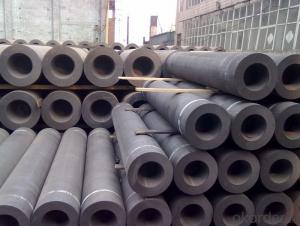Electric Arc Furnace (EAF) Graphite Electrodes are the unsung heroes of the steel industry. They are the silent workhorses that power the furnaces, melting down scrap metal and transforming it into new steel. But who really knows about these graphite electrodes? Let’s dive deep into the world of EAF graphite electrodes and explore their role, importance, and the challenges they face.
First things first, what exactly are graphite electrodes? They are essentially long, cylindrical rods made from high-quality, high-purity graphite. These electrodes are the primary energy source for the electric arc furnace. They generate the heat required to melt the scrap metal by conducting an electric current through the furnace. The process is simple yet powerful.
Now, let’s talk about the raw material. The graphite used in these electrodes is not your ordinary pencil lead graphite. It’s a special kind of graphite, known as needle coke, which is derived from petroleum. This needle coke is then processed and purified to create the high-purity graphite needed for the electrodes.
The production process of graphite electrodes is a fascinating journey. It starts with the mixing of raw materials, which includes petroleum coke and coal tar pitch. This mixture is then subjected to a series of heat treatments to form a prebaked anode. The anode is then baked in a controlled environment to achieve the desired density and strength. The final product is a graphite electrode that can withstand extreme temperatures and electric currents.
But why are graphite electrodes so important in the steel industry? The answer is simple: they are the backbone of the electric arc furnace process. Without these electrodes, the EAF process would not be possible. They are responsible for generating the heat required to melt the scrap metal, which is the first step in producing new steel.
However, the life of a graphite electrode is not an easy one. They face numerous challenges in the harsh environment of the electric arc furnace. The high temperatures, electric currents, and chemical reactions take a toll on the electrodes. They undergo gradual erosion, which reduces their size and effectiveness over time. This is where the role of electrode management comes into play.
Electrode management is a critical aspect of the EAF process. It involves monitoring the condition of the electrodes, adjusting their consumption rate, and replacing them when necessary. Proper electrode management ensures the efficiency and longevity of the electric arc furnace. It also helps in reducing production costs and minimizing downtime.
Now, let’s talk about the different types of graphite electrodes. There are three main types: standard, high power, and超高power. Each type has its own unique properties and applications. Standard electrodes are used for smaller furnaces and have a moderate power consumption. High power electrodes are designed for larger furnaces and can handle higher power loads. Ultra-high power electrodes are the latest innovation in the industry, offering even higher power and efficiency.
The future of graphite electrodes is promising, with ongoing research and development aimed at improving their performance, durability, and environmental impact. New technologies, such as 3D printing and nanotechnology, are being explored to create more advanced and sustainable graphite electrodes.
In conclusion, EAF graphite electrodes play a vital role in the steel industry. They are the driving force behind the electric arc furnace process, and their importance cannot be overstated. From their production to their application, these electrodes have a fascinating story to tell. So, the next time you see a steel beam or a car body, remember the humble graphite electrode that made it all possible.

